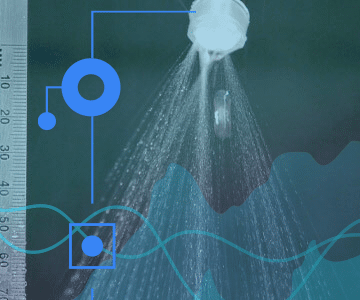FROM: Concept write-up
TO: Functional prototype, patent application
A dedicated university team engaged in endoscopy research approached in2being with an idea for improving the application of dyes and stains used in chromoendoscopy, a diagnostic technique primarily for gastrointestinal diseases.
An endoscope is a long, thin, flexible tube fitted with a camera, a light source, and sometimes a surgical tool. Endoscopy involves inserting the endoscope into a body cavity to search for abnormalities.
For example, in a colonoscopy (the most common use of endoscopy), an endoscope is inserted through a patient’s anus to inspect the colon for polyps, tumors, or other issues. The endoscope’s light provides illumination; the camera gives the doctor (a gastroenterologist) a real-time view of the colon’s interior; and a surgical tool enables the doctor to biopsy suspicious tissue or remove polyps.
Although endoscopy is generally safe and effective, the white light used in upper endoscopies (endoscopy of the esophagus, stomach, and small intestine) and colonoscopies sometimes fails to reveal abnormal tissue.
Chromoendoscopy was developed to address this limitation and improve diagnostic accuracy. This advanced technique involves the injection of a dye or stain into the cavity under examination. Common staining agents include:
- Lugol’s solution: Normal tissues absorb the solution and appear darker under white light; abnormal tissues (e.g., precancerous or cancerous) do not absorb the solution and consequently stand out.
- Indigo carmine: This dye coats the normal mucosal surface of gastrointestinal organs, providing a dark outline around abnormal surface lesions.
Although chromoendoscopy is useful, it is a difficult technique to master—primarily in the application of the staining agent. This was the problem the university research team asked us to help them solve.
The Starting Point: An Idea for Applying Chromoendoscopy Stains
Typically, chromoendoscopy stains are injected via an ordinary syringe that feeds a catheter fixed to the tip of an endoscope. The process involves two people: a physician and an assistant. The assistant squeezes the syringe as the physician slowly moves the endoscope backward in a spiral motion.
The difficulty? The assistant must have an exceptional touch on the syringe to create a spray; too much or too little pressure results in a one-directional stream or drips that fail to coat the interior of the organ evenly.
The university research team came to us for assistance in developing a device that would attach to the tip of an endoscope and deliver a consistent fan-shaped spray of the staining agent.
The Process: From Concept to Functional Prototype
The university team wanted to demonstrate the viability of their idea and prepare for possible patent applications.
In this engagement, in2being provided the following services:
- Proof of concept: First, we brought our knowledge of physics and design principles to bear in demonstrating the viability of the client’s idea.
- Mechanical design: Our engineers designed a device that ejects a consistent, even fan spray from the head of an endoscope—potentially making chromoendoscopy an easier and more effective diagnostic technique.
- Prototyping: Based on the device design, we developed a working prototype of an endoscope accessory that distributes chromoendoscopy stains in an even, fan-shaped spray.
- Validation and verification testing: We carried out verification testing to ensure that the device was built according to design and functioned as expected.
- Patent disclosures: At the client’s request, we produced patent disclosure documents describing the technological innovations incorporated into the spray cap and providing specifications for building it.
The Results: A Functional Prototype and Patent Disclosures
By the end of our engagement, we provided the client not only with proof that their idea would work—we also provided them with a functioning prototype. In addition, we drew up detailed patent disclosures that they could use in patent applications.
No matter what stage you’re at in the medical device development process, in2being can help you move forward. We provide a full spectrum of med-tech consulting services, from engineering, design, and prototyping to intellectual property and regulatory guidance.
Contact us today to discuss your innovative medical device and learn how we can help you proceed from an idea to a marketable product.

